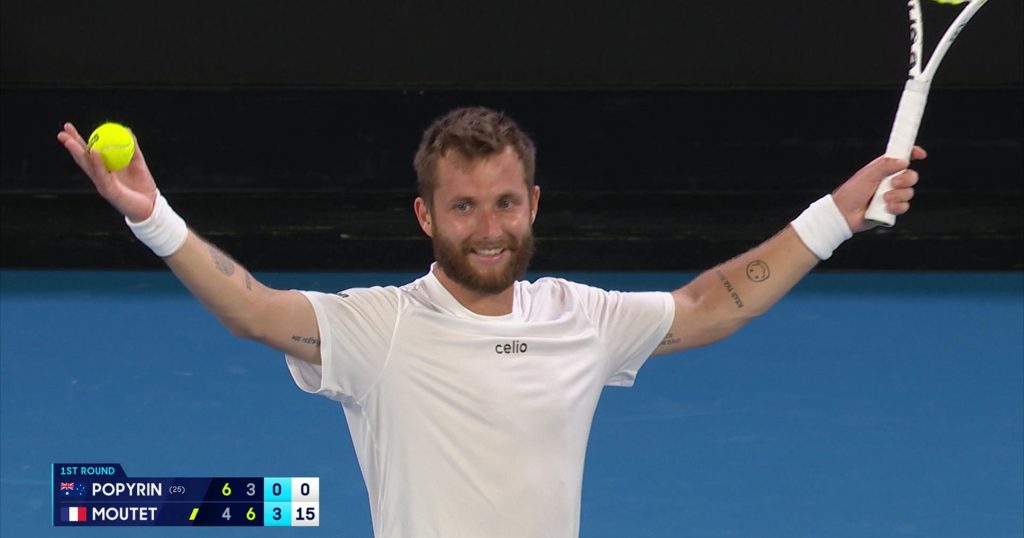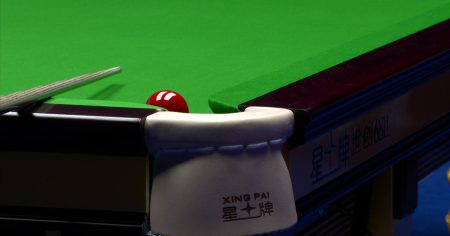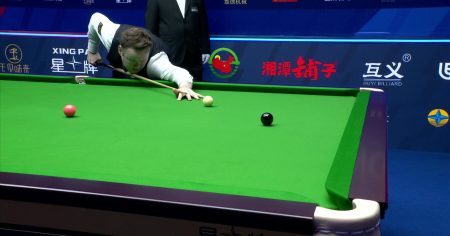The 2023 Australian Open witnessed a peculiar and controversial moment involving French tennis player Corentin Moutet during his first-round match. Moutet, known for his unconventional playing style and occasional on-court theatrics, attempted an underarm serve, a tactic often viewed as gamesmanship within the traditionally decorous world of tennis. However, the execution of the serve went awry, failing to clear the net and landing meekly on Moutet’s side of the court. The crowd, seemingly already agitated by aspects of Moutet’s play or demeanor, responded with a resounding chorus of boos, amplifying the awkwardness of the failed tactic. This incident highlighted the complex and sometimes contentious relationship between players, their chosen strategies, and the expectations of the audience.
The underarm serve, while perfectly legal within the rules of tennis, carries a stigma of being unsporting or disrespectful, a perception rooted in the traditional emphasis on power and overhead serving. It’s often employed as a surprise tactic against opponents anticipating a conventional serve, aiming to disrupt their rhythm and potentially win a cheap point. While some players, like Nick Kyrgios, have embraced the underarm serve as a legitimate strategic tool, its use often draws ire from both opponents and spectators who view it as a breach of unwritten codes of conduct within the sport. Moutet’s failed attempt, compounded by the crowd’s negative reaction, underscored the risks associated with this controversial tactic.
The crowd’s reaction to Moutet’s failed underarm serve can be interpreted through several lenses. Firstly, the inherent expectation of a powerful and skillful serve, the traditional opening salvo of a tennis point, was subverted by Moutet’s attempt, especially given its unsuccessful execution. This likely contributed to a sense of anticlimactic disappointment among the spectators. Secondly, the context of the match, potentially including prior incidents involving Moutet’s behavior or perceived lack of effort, likely exacerbated the crowd’s response. A history of on-court disputes or questionable sportsmanship could have primed the audience to react negatively to any perceived slight, including a poorly executed underarm serve.
Beyond the immediate reaction to the failed serve, the incident sparked broader discussions about the role of sportsmanship and tradition within tennis. The underarm serve, while legal, remains a divisive issue, raising questions about the balance between strategic innovation and adherence to established norms. Critics argue that it undermines the spirit of competition and disrespects the opponent, while proponents defend it as a legitimate tactic that exploits vulnerabilities and adds an element of unpredictability to the game. Moutet’s case highlights the ongoing debate about the acceptability of such tactics and the challenges players face when challenging conventional wisdom.
Furthermore, the incident touched upon the complex dynamics between player and audience. The crowd, often viewed as a neutral observer, can exert significant influence on the atmosphere and even the outcome of a match. Their reactions, whether cheers of support or jeers of disapproval, can impact a player’s confidence, focus, and overall performance. In Moutet’s case, the negative response likely added to the pressure he faced, potentially contributing to further errors or a decline in his gameplay. This incident underscores the important role of audience engagement and the potential for crowd reactions to become an integral part of the narrative of a sporting event.
Finally, the availability of the Australian Open on streaming platforms like discovery+ significantly broadened the reach of this incident. The immediate availability of footage and highlights, coupled with the rapid spread of information on social media, amplified the discussion surrounding Moutet’s underarm serve and the crowd’s reaction. This highlights the increasing role of digital media in shaping public perception of sporting events and the potential for seemingly minor incidents to become global talking points. The ability to instantly replay and share these moments contributes to a more engaged and interactive viewing experience, but also potentially magnifies the impact of controversial actions and audience reactions. The incident with Moutet became more than just a moment in a tennis match; it transformed into a viral snippet, subject to widespread commentary and debate, further emphasizing the convergence of sports and digital media.














